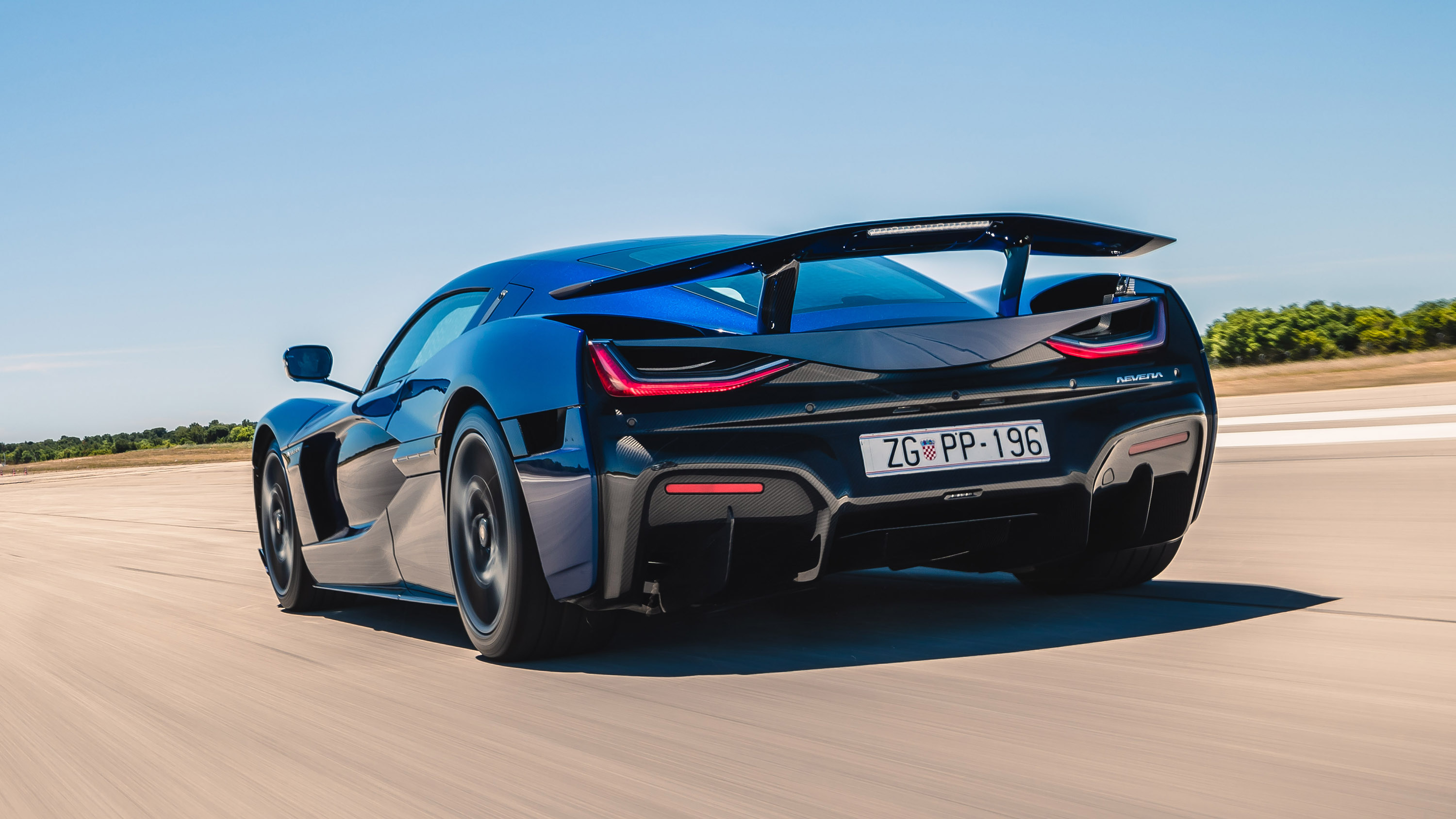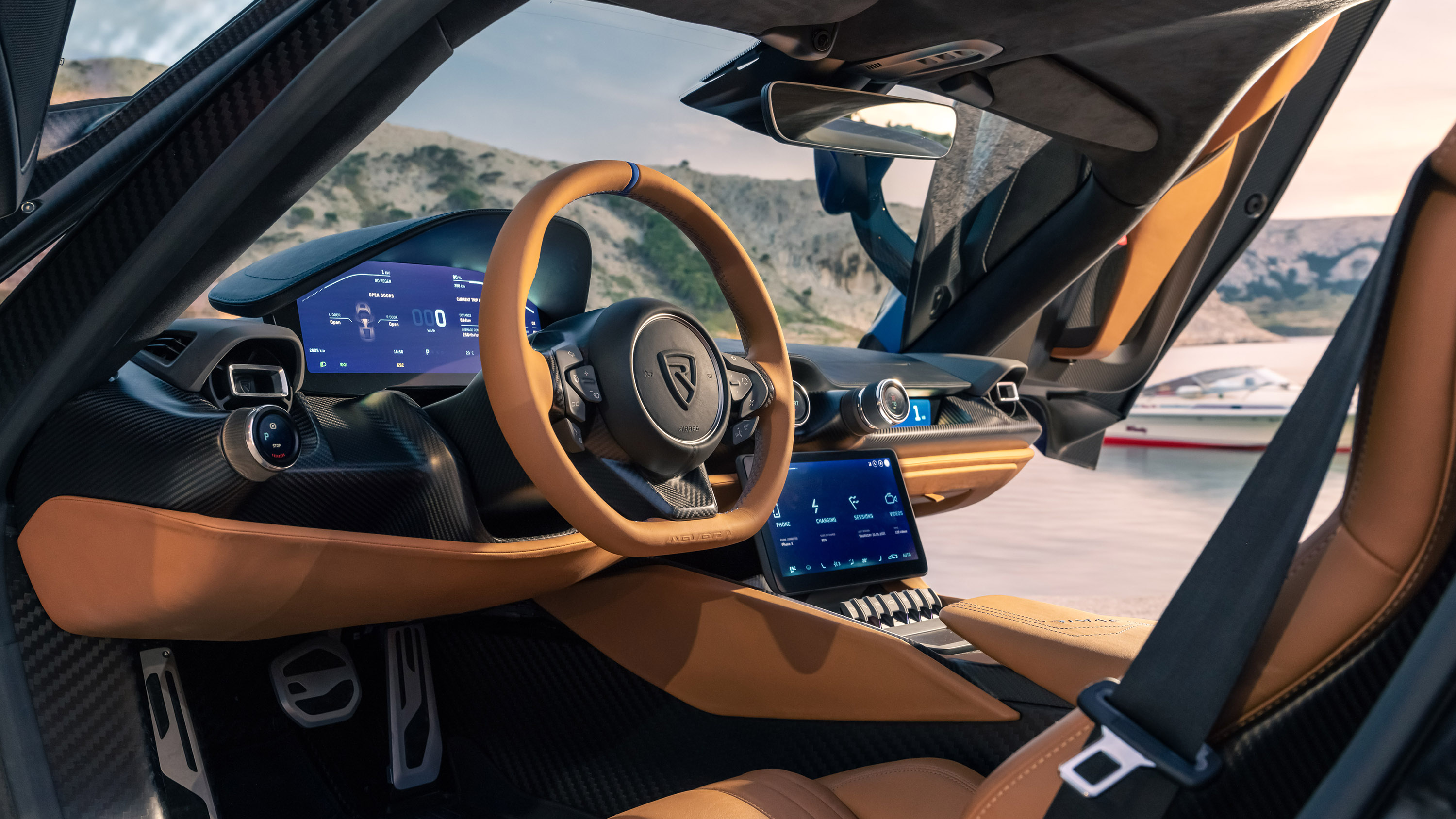
Rimac Nevera review
Interior
What is it like on the inside?
Rimac has nailed this part, too. Well, mostly. Once again, almost everything is proprietary, from the main infotainment system and all its software to the interior door handles, switchgear and air vents. These are all made from billet aluminium and look great. The steering wheel feels good in your hands and locates the indicators on buttons in Ferrari fashion. There are no column stalks in here.
There are three high-definition TFT screens, running bespoke software and graphics. The main one is configurable, displaying all the info you need plus some stuff you probably don’t but is fun to have: there’s a real time torque display, which shows how much each wheel is coping with, a g-meter, and various other read-outs that are difficult to process on the move.
The central screen handles infotainment, phone, navigation, climate control (the HVAC is the only borrowed component, and comes from the Audi R8), but it’s also where you go to adjust the seats. We’d prefer to have manual adjustment.
Mate Rimac is a self-confessed data fiend, so the central screen is also home to the Nevera’s telemetry, which can be downloaded to a laptop or smartphone for review. Mate does this at the runway, and gleefully tells me where TG was accelerating most vigorously, what mode we were in, and how much power we used: 1,580bhp apparently.
Rimac has developed its own M2M data system to allow owners to analyse driving performance, metrics and map previews on all the usual platforms, and there will be over-the-air updates as and when. On top of all this, there’s also an AI driver coach, which uses the car’s 12 ultrasonic sensors, 13 cameras, and six radar hooked up to the latest NVIDIA Pegasus operating system to overlay race circuits in real-time to allow drivers to work on the perfect line, and braking and acceleration points. It’s a Rimac spin on the car’s level four autonomy capability. I doubt there’s a more connected hypercar than this.
But it also has its analogue moments. The main drive controller is in billet aluminium, as is the drive mode selector and a third that allows you to adjust the torque load and distribution. Mate says he isn’t happy with their haptics and the action is still a bit clonky. This is a pre-production car, of course, but I’d still take analogue clonkiness over the pervading touchscreen tyranny any day.
Featured

Trending this week
- Car Review
Hyundai Kona
- Long Term Review
Time's up with the Mini Countryman: here's the six-month verdict






